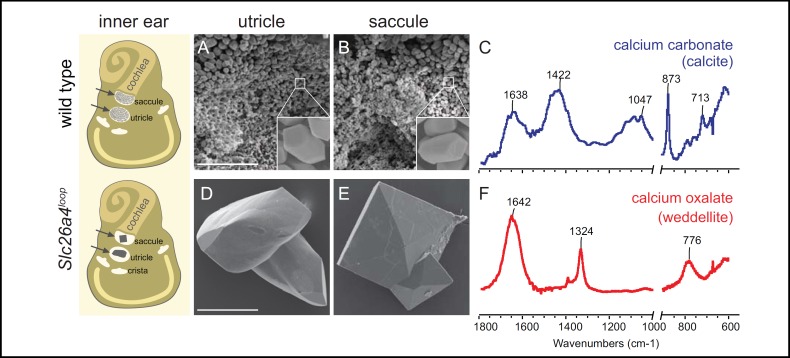Fig. 4.
Calcium oxalate minerals in the Slc26a4loop vestibular system is a unique phenotype among Slc26a4 mouse models. Left panel: Schematic illustration of the inner ear summarizing the morphological differences of the inner ear stones at the age of 10 months old. The two sensory maculae of the vestibular system, utricle and saccule are indicated (arrows). A, B: SEM images of the utricle and saccule of a wild-type mouse shows the small (~7 μm) otoconia with typical morphology (inset in A and B). C: The spectrum of wild-type otoconia, showing the typical calcite vibrations at 713, 875 and 1422 cm-1. D, E: Minerals extracted from the utricle and saccule of Slc26a4loop mutant mice. The utricle minerals are larger relative to wild-type otoconia. In the saccule, a new type of mineral can be found with crystal morphology typical of Ca-oxalate dihydrate (weddelite) crystals. F: Spectrum of the mineral extracted from the saccule in Slc26a4loop mutant mice shows vibrations at 1324 and 776 cm-1 that are typical of weddelite crystals. Scale bars equal 50 μm in panel A applies to B, 100 μm in panel D applies to E. Adapted from [42] with permission.

